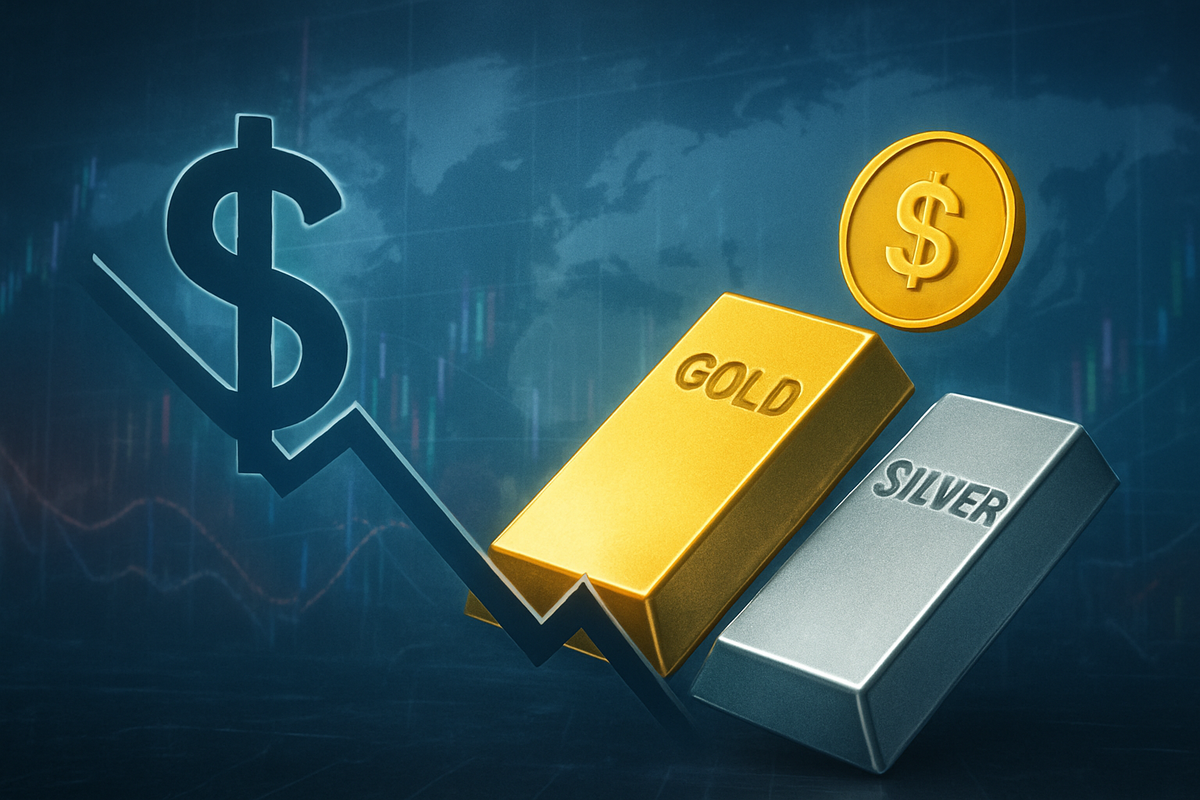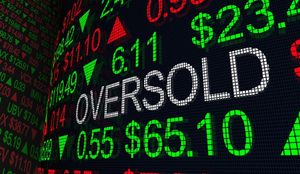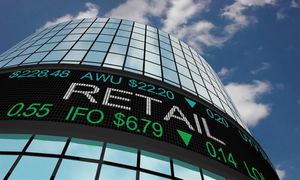Financial News
Decisive Days Ahead: USD Index, Gold, and Silver Brace for Pivotal Shifts

The global financial markets are on tenterhooks as the USD Index (DXY), gold, and silver stand at a critical juncture, poised for potentially significant movements in the coming days. Fuelled by escalating expectations of an imminent US Federal Reserve interest rate cut in December, these key assets are navigating a landscape fraught with both opportunity and risk. Investors are keenly observing technical levels and awaiting further economic cues, recognizing that the trajectory of these markets will have profound implications across the financial spectrum.
The prevailing sentiment suggests a "decisive period" where the balance could tip, leading to either sustained gains for precious metals or a resurgence of the dollar, depending on the Fed's next move and the market's interpretation of upcoming data. This anticipation has created an environment of cautious optimism for gold and silver, traditionally seen as safe havens and inflation hedges, while placing the US dollar under considerable pressure.
Market Dynamics in Focus: A Timeline of Anticipation
As of November 25, 2025, the markets are largely reacting to a chorus of dovish signals emanating from the US Federal Reserve. Key figures, including Governor Waller, New York President John Williams, and San Francisco President Mary Daly, have articulated views that have significantly bolstered expectations for a 25-basis-point rate reduction in December. The CME FedWatch Tool now reflects an over 80% probability of such a cut, a stark contrast to earlier hawkish leanings.
The USD Index (DXY) has felt the immediate impact, registering a notable decline to 99.7870 on November 25, a 0.35% drop from the previous session, and slipping below the psychological 100-mark. While it has seen a 1.02% strengthening over the past month, the year-on-year performance shows a significant 6.75% decline, indicating a broader bearish trend. Gold, conversely, has shown remarkable resilience, climbing to $4,140.11 USD per troy ounce, a 0.11% increase on the day, and reaching its highest level since mid-November. It surged nearly 2% earlier in the week, propelled by weaker US economic data and rate cut hopes. The yellow metal has already seen a 57.28% rise year-on-year. Silver has mirrored gold's bullish momentum, with spot prices hovering around $50.50, up approximately 1% for the day and recording a 3.4% gain earlier in the week. It has surged nearly 60% since the beginning of 2025.
Beyond monetary policy, geopolitical tensions, particularly the ongoing conflicts in Ukraine and the Middle East, continue to underpin demand for gold and silver as safe-haven assets. However, a prevailing "risk-on" mood in broader equity markets has somewhat tempered gold's potential upside. The release of delayed US economic data, including retail sales and producer price figures, will be crucial in shaping the immediate future, providing further clarity on inflation and economic health that could sway the Fed's decision-making. These indicators will be meticulously scrutinized by market participants, influencing short-term volatility and potentially triggering significant price swings in the coming days.
Corporate Fortunes and Asset Class Repercussions
The impending shifts in the USD Index, gold, and silver markets carry significant implications for various public companies and broader asset classes. A weakening US Dollar, driven by rate cut expectations, generally benefits multinational corporations (MNCs) that derive a substantial portion of their revenue from overseas. Companies like Microsoft (NASDAQ: MSFT), Apple (NASDAQ: AAPL), and Coca-Cola (NYSE: KO), with vast international operations, could see their foreign earnings translate into higher dollar values, boosting their bottom lines. Conversely, a stronger dollar could erode these gains.
For the precious metals sector, a sustained rally in gold and silver prices would be a boon for mining companies. Major gold miners such as Newmont Corporation (NYSE: NEM) and Barrick Gold Corporation (NYSE: GOLD), along with silver producers like Pan American Silver Corp. (NASDAQ: PAAS) and Wheaton Precious Metals Corp. (NYSE: WPM), stand to gain significantly from higher commodity prices, translating into increased revenues and potentially expanded profit margins. Their stock prices often correlate strongly with the price movements of the underlying metals. Conversely, a sharp pullback in gold and silver could lead to pressure on these companies' valuations.
Beyond direct commodity exposure, the "decisive days ahead" could also impact bond markets and other currency pairs. Lower US interest rates typically lead to lower bond yields, making fixed-income investments less attractive and potentially driving capital towards higher-yielding assets or equities. Emerging market currencies could strengthen against a weaker dollar, potentially benefiting companies with exposure to those regions. The overall market sentiment, shifting between risk-on and risk-off depending on the Fed's stance and geopolitical developments, will dictate capital flows across various asset classes, creating winners and losers in a dynamic financial environment.
Wider Significance: Macroeconomic Ripples and Historical Context
The current market movements in the USD Index, gold, and silver are not isolated events but rather integral parts of broader macroeconomic trends, primarily centered around global monetary policy and geopolitical stability. A potential Fed rate cut in December, if realized, would mark a significant pivot from the tightening cycle seen over the past few years, signaling a shift towards accommodating economic growth. This move could set a precedent for other major central banks, potentially leading to a synchronized easing of monetary policy worldwide, which would have far-reaching effects on global trade, investment, and inflation dynamics.
Historically, periods of anticipated or actual interest rate cuts by the Federal Reserve have often correlated with a weaker US dollar and stronger precious metals. Gold and silver, being non-yielding assets, become more attractive when the opportunity cost of holding them (i.e., foregone interest from dollar-denominated assets) decreases. This pattern was evident in various easing cycles, where precious metals served as a hedge against currency devaluation and potential inflation, even if not directly driven by inflation concerns in the current scenario. The geopolitical tensions in Ukraine and the Middle East further amplify their safe-haven appeal, drawing parallels to historical periods of global instability where investors flocked to tangible assets.
Regulatory and policy implications are also at play. A sustained period of lower interest rates could encourage greater borrowing and investment, but also carries the risk of asset bubbles if not managed carefully. Policymakers will be closely monitoring inflation figures and employment data to ensure that monetary easing does not inadvertently trigger inflationary pressures or destabilize financial markets. The interplay between fiscal policy (government spending) and monetary policy will be crucial in shaping the long-term economic outlook, with potential ripple effects on competitors and partners across various industries as capital flows and investment decisions adapt to the evolving interest rate environment.
What Comes Next: Scenarios and Strategic Adaptations
The immediate future for the USD Index, gold, and silver hinges critically on the Federal Reserve's December meeting and subsequent economic data releases. In the short-term, if the Fed delivers a 25-basis-point rate cut, the USD Index (DXY) is likely to face further downward pressure, potentially testing lower support levels. This scenario would provide a significant tailwind for gold and silver, allowing them to push towards their respective resistance levels, with gold potentially eyeing $4,200 and silver targeting $52.50 or higher. However, any hawkish surprises or stronger-than-expected economic data could trigger sharp pullbacks across precious metals and a rebound in the dollar.
Looking long-term, the trajectory of these markets will depend on the broader economic landscape and the Fed's sustained monetary policy. If global economic growth remains subdued and inflation is contained, the Fed might embark on a more extended easing cycle, which would generally favor gold and silver as alternative stores of value. This could lead to a sustained multi-year bull run for precious metals. Conversely, a robust recovery in the US economy, coupled with a more hawkish Fed stance, could see the dollar regain strength, challenging the upside for gold and silver.
Strategic pivots for investors and companies will be essential. Those with significant dollar exposure might consider hedging strategies to mitigate currency risk. Precious metals investors will need to carefully watch key technical support and resistance levels, employing "buy on dips" strategies if the bullish trend persists, but also being prepared for potential corrections. Mining companies may look to capitalize on higher commodity prices by optimizing production or exploring new projects. Market opportunities could emerge in sectors that benefit from lower borrowing costs or increased international trade due to a weaker dollar. Potential scenarios range from a continued precious metals rally driven by dovish central banks and geopolitical uncertainty, to a dollar resurgence if the global economic outlook improves and the Fed adopts a more cautious approach to easing.
Comprehensive Wrap-Up: Navigating the Evolving Landscape
The coming days represent a pivotal moment for the USD Index, gold, and silver markets, driven primarily by the high probability of a US Federal Reserve interest rate cut in December 2025. Key takeaways indicate that a dovish Fed stance is currently weighing on the dollar while providing significant bullish momentum for precious metals. Gold has surged over 57% year-on-year, and silver nearly 60% since the start of 2025, reflecting their roles as safe havens amidst geopolitical tensions and beneficiaries of lower interest rate expectations.
Moving forward, the market will remain highly sensitive to incoming economic data, particularly inflation and employment figures, as well as any further communications from central bank officials. The ability of gold and silver to sustain their current rallies or push higher will depend on their performance at critical technical resistance and support zones. Conversely, the USD Index's trajectory will be determined by whether it can hold key support levels or if a definitive break below them confirms a bearish continuation.
Investors should watch for several key indicators in the coming months: the actual outcome of the December Fed meeting, the Fed's forward guidance on future rate policy, the evolution of geopolitical events, and the performance of global economic growth. A sustained period of lower interest rates could reshape investment portfolios, favoring assets that perform well in such environments. While the immediate outlook suggests continued strength for precious metals, vigilance is paramount as market dynamics can shift rapidly. This period underscores the interconnectedness of global financial markets and the profound impact of monetary policy decisions on asset valuations.
This content is intended for informational purposes only and is not financial advice
More News
View More




Recent Quotes
View More
Quotes delayed at least 20 minutes.
By accessing this page, you agree to the Privacy Policy and Terms Of Service.



